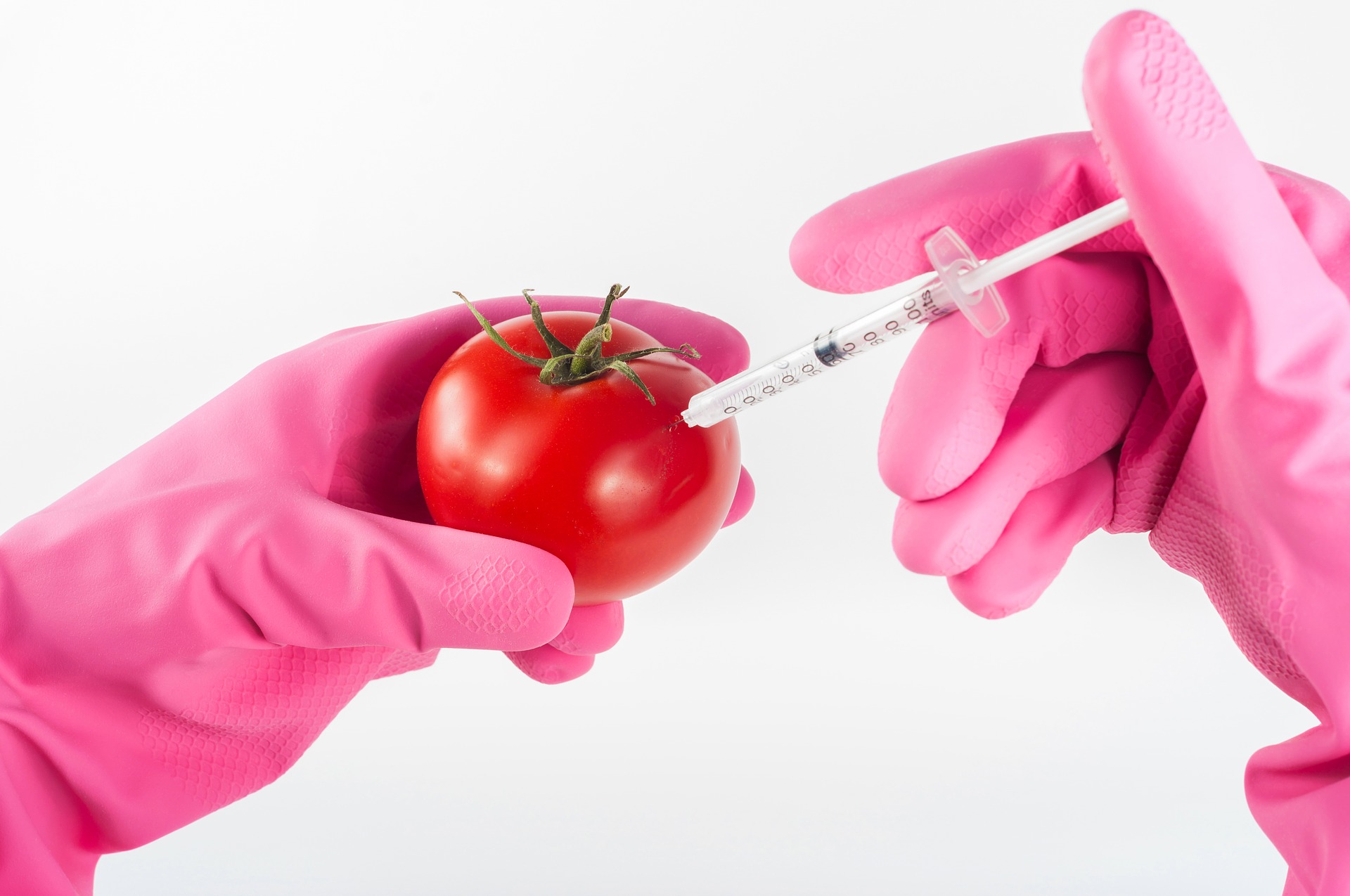“Most people don’t have a lot of knowledge about GMOs. The average person hasn’t spent much time thinking about it. Nonetheless, if they were to see a label about them, they would likely be averse to them. It’s something that seems a little unnatural, and there’s a psychological tendency to desire naturalness in food and avoid some forms of novelty in food. That plays into a psychological bias that we have against them.” Jayson Lusk (2015) – Economist, Distinguished Professor and the Head of the Agricultural Economics Department at Purdue University 1.
This quote certainly seems to at least partially describe the current state of distrust of GMOs in some consumer sectors.
I know this one is probably the post you’ve all been waiting for, and it’s impossible to truly do it justice in the 1500 word limit I gave Lara, but she certainly gave it an honest effort.
In her previous post, Lara explored the tangible benefits of GMO use and shed light on why modified crops are increasingly becoming agricultural staples.
In today’s article, she will explore public fears and misconceptions (justified or otherwise) surrounding the development, growth and consumption of GMO crops and help us to better understand any potential and/or theoretical darker sides of our growing obsession with biotechnology.
Concern #1 – Theoretical Risks to Human Health
One of the primary areas of concern as it relates to the consumption of GMO foods is the potential of unintended negative effects on human health.
Let’s take a closer look at some areas of interest that pertain to this argument.
Allergenicity
A prominent worry regarding GMO consumption is the potential development of new allergens through gene-transfer and the creation of what are essentially “new” foods 3.
The top 10 allergens in Canada, as listed by Health Canada, include: peanuts, eggs, milk, mustard, crustaceans and molluscs, fish, sesame seeds, soy, sulphites, tree nuts and wheat and triticale 3.
Allergies can cause atopic reactions, gastric distress or the most severe reaction, anaphylaxis, which may cause death 4.
But are GMO foods more likely to be allergenic?
“The prevalence of food allergies in children has increased considerably over the past 20 years. While this increase is partially coincident with the introduction of GMO foods into the American marketplace, the increasing prevalence of food allergies in children actually began 5-7 years before the introduction of GMOs. Furthermore, the food allergies that have increased the most including peanut, tree nut, egg and milk allergies are foods that are not GMO. The primary GMO foods in the U.S. are soybeans and corn. Corn allergy is and always has been rarely identified. Soybeans are among the most commonly allergenic foods, but no evidence exists to suggest that the prevalence of the soybean allergy has increased over the past 20 years” – Dr. Stephen Taylor (2012), Professor, Food Science & Technology at the University of Nebraska-Lincoln.
Antibiotic Resistance
Antibiotic resistance is a common trait that is selected for the genetic engineering of GMO crops. Concerns antibiotic resistance from gene transfer, has been raised.
Gene transfer is the movement of genetic material between organisms and there has been discussions that antibiotic resistant traits of GMO foods could transfer to humans through the gastrointestinal tract 11.
Although there is theoretically a chance of such an occurrence taking place, no evidence exists to suggest that it has. Also, the WHO (World Health Organization) says that the likelihood of a gene transfer to happen in this manner is very low 11.
Concern #2 – Economic Disparity
The next most common concern as it relates to GMOs is that they may keep the rich, richer and the poor, poorer.
Genetically modified seeds are known to be more expensive than their conventional counterparts, which creates potential pitfalls for the small and vulnerable farmers 7.
One could argue, however, that this higher cost is offset by a higher yield but that certainly depends on the manner in which these private biotech companies operate 2,5.
The higher price point arises primarily due to the seeds being patented, which can lead to farmers getting potentially sued over patent infringement if GMO seeds are not utilized in the appropriate manner, without a license, or if attempts are made to save crop to be re-planted the following season 2,5,10.
It’s not unusual to be exposed to the plight of the common farmers in documentaries that explore agriculture in the wake of this biotechnological take over.
Given the practical limitations of my expertise in this subject area I’m not in the position to draw firm conclusions over the state of this concern in this very complicated arena, but I think it’s safe to say we must always be wary of situations such as these which may put farmers at the mercy of massive organizations.
The next question we must explore is whether or not GMO crops have the potential to negatively impact the environment.
Bt Corn
A common case study used to explore this question is Bt corn.
This corn, as discussed in part I of this series, is genetically modified to express a bacterium from soil called Bacillus Thuringiensis.
A laboratory study that was published in Nature discussed how Bt corn caused unintended harm in local ecosystems of monarch caterpillars 8.
This bacterium is a protective insecticide that supports corn growth and resistance to pests that allows farmers to save money on externally applied pesticides, which have a host of criticisms of their own 8.
The issue, however, is that monarch caterpillars in surrounding ecosystems were dying upon consumption of their preferred feed (milkweed plants) that ended up being covered in pollen from the modified corn.
Windblown pollen from Bt corn onto local milkweed plants in neighbouring fields means that the caterpillars will eat the milkweed plants and die, resulting in long-term consequences for local ecosystems 7,8.
Once again it appears that the jury is still out as to whether or not this phenomenon is pervasive or profound enough to warrant more widespread concern, but it remains pertinent to keep Bt corn in areas that will minimize this potentially damaging effect.
Glyphosate
Perhaps the most widespread of all concerns regarding GMOs is at it relates to the herbicide glyphosate, which is a primary constituent of agri-giant Monsanto’s RoundUp weed killer.
RoundUp has been increasingly used in North America over the last decade on crops that have been genetic modified to survive its application including as corn, soy, canola, cotton, sugar beets and alfalfa 9.
A study conducted by Samsel and Saneff (2013) suggests that the use of glyphosate may be harmful to our bodies 9.
However, major health organizations that would be responsible for regulating its use, including the FDA, Health Canada and the Environmental Protection Agency (EPA) have stated that they found no evidence that glyphosate is toxic or harmful to the nervous or immune system based on their evaluations 6.
I am once again in no position to draw firm conclusions, and have provided only a sampling of the argument, but it’s safe to say that observance and vigilance surrounding this topic will not be going away anytime soon.
How To Avoid GMOs? 12
After two articles that helped you understand what GMOs are and why they exist, it was incredibly important to have an open and honest discussion about some of the criticisms and concerns that people harbour about them.
The goal of this article, as I hope you will realize, is not to deter you from consuming GMO foods.
If, however, you desire the empowerment necessary to make that decision for yourself, here are some quick tips that will help:
-
Eat organic: In foods that are organic, it is prohibited to add genetically modified ingredients.
-
Purchase foods that have a “Non-GMO” verified label: with this label that companies voluntarily choose to add, it doesn’t mean that the food is always organic. However, a “Non-GMO” label simply means that it does not include ingredients that are genetically modified.
-
Avoid the common GMOs: Some common crops that may include GMOs are sugar beets, canola, soy, cotton, corn, papaya and Arctic branded apples.
-
Carefully check the sources of meat, eggs, and dairy: although the animals that produces these sources are not GMOs, they could have been fed GMO feed. For that reason, check organic or “Non-GMO” verified labels.
I am not explicitly or widely prescribing the course of action above, only offering it as a source of education and empowerment.
Final thoughts
This last article was, without question, the hardest to write.
The evidence is mixed and conclusions are hard to draw on, but even so we cannot deny the stance of most major organizations responsible for governing the safety of our food.
That does not mean we should remain ignorant or unaware of the science as it emerges, only that we should be vigilant and balanced, as much as we can, of our assessment and not let fear monger or politics deter us from eating the foods we love and have known to be healthy.
Thank you for joining me on this three-part exploration of an incredibly challenging topic, I hope you learned as much as I did!
Resources
-
Ferdman. (2015). Why we’re so scared of GMOs, according to someone who has studied them since the start. Retrieved from https://www.washingtonpost.com/news/wonk/wp/2015/07/06/why-people-are-so-scared-of-gmos-according-to-someone-who-has-studied-the-fear-since-the-start/?noredirect=on&utm_term=.07c22cb92785
-
Fischer, K., Ekener-Petersen, E., Rydhmer, L., & Edvardsson Björnberg, K. (2015). Social impacts of GM crops in agriculture: A systematic literature review. Sustainability, 7, 8598–8620.
-
Goodman, R. E., Vieths, S., Sampson, H. A., Hill, D., Ebisawa, M., Taylor, S. L., & van Ree, R. (2008). Allergenicity assessment of genetically modified crops–what makes sense? Nature Biotechnology, 26(1), 73-81. doi:10.1038/nbt1343
-
Herman, E. M. (2003). Genetically modified soybeans and food allergies. Journal of Experimental Botany, 54(386), 1317-1319. doi:10.1093/jxb/erg164
-
Mosher, G., & Hurburgh, C. (2010). Transgenic plant risk: Coexistence and economy. Encyclopedia of Biotechnology in Agriculture and Food, 1, 639–642.
-
National Pesticide Information Center. (2019). Glyphosate. Retrieved from http://npic.orst.edu/factsheets/glyphogen.html
-
Pandey, A., Kamle, M., Yadava, L. P., Muthukumar, M., Kumar, P., Gupta, V., Pandey, B. K. (2010). Genetically modified food: Its uses, future prospects and safety assessments. Biotechnology (Faisalabad), 9(4), 444-458. doi:10.3923/biotech.2010.444.458
-
Phillips, T. (2008). Genetically Modified Organisms (GMOs): Transgenic Crops and Recombinant DNA Technology. Retrieved from https://www.nature.com/scitable/topicpage/genetically-modified-organisms-gmos-transgenic-crops-and-732
-
Samsel, A., & Seneff, S. (2013). Glyphosate’s Suppression of Cytochrome P450 Enzymes and Amino Acid Biosynthesis by the Gut Microbiome: Pathways to Modern Diseases. Retrieved from https://www.mdpi.com/1099-4300/15/4/1416/htm
-
Technica, A. (2017). Supreme Court Considers GM Crop Patent Case. Retrieved from https://www.wired.com/2012/04/arstechnica-agriculture-patents/
-
WHO. (2014). Frequently asked questions on genetically modified foods. Retrieved from https://www.who.int/foodsafety/areas_work/food-technology/faq-genetically-modified-food/en/
-
Whole Foods. (2018). GMO Shopping Tips. Retrieved from https://www.wholefoodsmarket.com/gmo-shopping-tips



